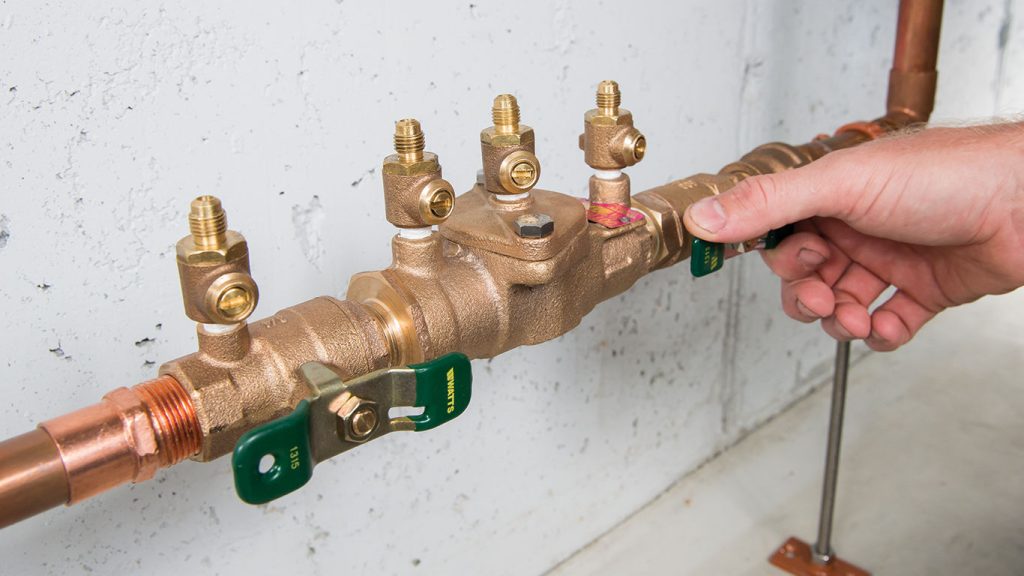Backflow prevention and your irrigation system

The Connecticut Department of Health defines a cross-connection as any actual or potential physical connection between a public water system, and any source of non-potable liquid, solid or gas that could contaminate the potable water supply by backflow. Backflow is the reversal of flow of water or other substances into the public water system or consumer’s potable water system. Under backflow conditions, unprotected cross-connections can introduce biological, chemical and/or physical contaminants into the drinking water.
Backflow prevention is an important aspect of irrigation systems that helps to ensure that water flows in the intended direction and does not become contaminated by pollutants or other unwanted substances. Below, we’ll explore the reasons why backflow prevention is needed on irrigation systems and how it works to protect our water supply.
Irrigation systems are designed to transport water from a source, such as a well or municipal water supply, to a property’s landscape. These systems often include a variety of components, such as pumps, valves, and sprinklers, that work together to distribute water efficiently and effectively. However, if the irrigation system is not properly designed or maintained, it can become vulnerable to backflow, which is the unintended flow of water in the opposite direction.
Backflow can occur in irrigation systems due to a variety of factors, such as a sudden drop in water pressure, a break in the irrigation system, or an improperly installed check valve. When backflow occurs, it can cause contaminants, such as pesticides, fertilizers, or even sewage, to enter the irrigation system and be inadvertently distributed to the property’s landscape. This can be harmful to the environment and to human health, as well as to the irrigation system and other parts of the water supply.
To prevent backflow from occurring in irrigation systems, backflow prevention devices are installed. These devices work by automatically shutting off the flow of water in the event of a sudden drop in water pressure or other conditions that could cause backflow.
There are several types of backflow prevention devices, including:
- Atmospheric Vacuum Breaker (AVB)
- Double Check Valve Assembly (DCVA)
- Reduced Pressure Zone Device (RPZD)
- Pressure Vacuum Breaker (PVB)
Each device is designed to protect against specific types of backflow, and the most appropriate device will depend on the specific irrigation system and the potential hazards that it faces. CT State Law only approves PVB and RPZ type backflow preventers for irrigation systems. The type of backflow is chosen during the design process and may vary depending on elevation changes and landscape layout.
It’s important to note that regular maintenance and testing of the backflow prevention device is important to keep them in good working condition, and to prevent against the possibility of backflow. Depending on the regulations in your location, it may be required to have it tested by a licensed professional annually or after any repair or maintenance, for compliance purposes and for personal protection. CT state law requires annual testing of backflow devices by a certified backflow tester and results sent to the water purveyor. State law aside, backflow manufacturers recommend testing at least once a year, or more for more harsh service conditions.
In conclusion, backflow prevention is an essential aspect of irrigation systems that helps to ensure that water flows in the intended direction and does not become contaminated by pollutants or other unwanted substances. By installing and regularly maintaining backflow prevention devices, we can protect our water supply and the environment from the harmful effects of backflow.
